Back then (6 years ago) there was not much available on the internet but still, The Incredible Art Department and a smattering of Usborne Art Books got me through. Now, with the proliferation of sharing from art teachers all over the country, I'm able to download, peruse and modify hundreds of art lesson ideas.
But again, that takes some planning and a lot of time. So to make life easier for you, here is a list of links to my most popular Deep Space Sparkle art lessons plus supply list that will get through you through at least half of the school year (more depending on how many classes you teach).
Starting today with Kindergarten, I'll lead you through the best start-off-the year lessons for each grade up to sixth.
For a complete list of Basic Art Supplies and Optional Art Supplies, scroll down the left sidebar.
Kindergarten
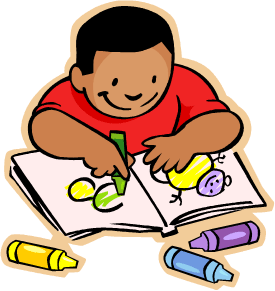 Ahhh. My favorite students. So eager, undisciplined and adorable. My biggest advice for teaching art to kinders is to not underestimate them. They can follow directions, sit for longer than you expect and will come up with the most adorable variations of your art lesson. I can't say this would be true if you were teaching them how to read, but for art, you got an appreciative crowd.
Ahhh. My favorite students. So eager, undisciplined and adorable. My biggest advice for teaching art to kinders is to not underestimate them. They can follow directions, sit for longer than you expect and will come up with the most adorable variations of your art lesson. I can't say this would be true if you were teaching them how to read, but for art, you got an appreciative crowd.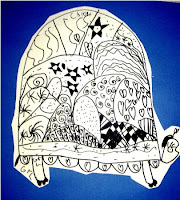 To start the year off, go with a line drawing. My Turtle Line Drawing lesson is a perfect project that allows you to assess the classes ability to listen and follow directions. It has other benefits as well: for starters, little inventory required. Just white paper and a black marker. The other benefit is that the cutting and pasting of the turtle onto a colored piece of paper can be done throughout the year when time becomes available. Resist the urge to have a parent helper cut out the turtle: kids this age need lots of cutting practice.
To start the year off, go with a line drawing. My Turtle Line Drawing lesson is a perfect project that allows you to assess the classes ability to listen and follow directions. It has other benefits as well: for starters, little inventory required. Just white paper and a black marker. The other benefit is that the cutting and pasting of the turtle onto a colored piece of paper can be done throughout the year when time becomes available. Resist the urge to have a parent helper cut out the turtle: kids this age need lots of cutting practice.Time: One 40-minute class (plus extra for cutting and pasting)
Supplies: Black marker, white drawing paper, colored construction paper for mounting, glue and scissors
Now that you warmed up the kids with the line drawing, advance to a painting and color wheel lesson: Colorwheel Clowns. This lesson takes at least three, 40-minute classes, so plan ahead.
It requires more prep time, but the project teaches so many basics, it's worth doing at the beginning of the year.
Time: three, 40-minute classes
Supplies: white card stock with a color wheel pattern (I made mine by tracing the bottom of a container and adding the lines), plain white card stock (for the head), small pieces of leftover construction paper in a variety of colors, 12" x 18" colored construction paper for each child, glue sticks, red, yellow and blue tempera paint, pencil, scissors and a plastic cup for each child
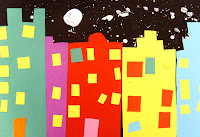 Now that the kids have experimented with paint, line and cutting, it's time for some fun with paper. My City at Night lesson is a fantastic project to teach cutting skills, shapes, and color. It only takes two lessons to complete the project but don't be surprised if some kids finish in one.
Now that the kids have experimented with paint, line and cutting, it's time for some fun with paper. My City at Night lesson is a fantastic project to teach cutting skills, shapes, and color. It only takes two lessons to complete the project but don't be surprised if some kids finish in one.Another great cutting and pasting lesson is Kandinsky's Circles. It requires a bit more time for the cutting stage, since many kids find it more difficult cutting circles than straight lines.
Time: Two, 40-minute classes
Supplies: Scissors & glue stick per student, colored construction paper in various colors cut into rectangles, 1 12" x 18" black paper per student, white tempera paint mixed w/water, 1 small stiff brush per student.
 Now it's time for a portrait. You just have to create a self-portrait in Kinder and this Self-Portrait Collage is my absolute favorite. It builds on the skills the children have learned so far and it teaches new ones. My only advice for this project is not to be too rigid. I know it's really important to kinder teachers that a child get the color of his eyes correct, but remember, it's still art and it's vital that the kids don't worry about being wrong.
Now it's time for a portrait. You just have to create a self-portrait in Kinder and this Self-Portrait Collage is my absolute favorite. It builds on the skills the children have learned so far and it teaches new ones. My only advice for this project is not to be too rigid. I know it's really important to kinder teachers that a child get the color of his eyes correct, but remember, it's still art and it's vital that the kids don't worry about being wrong.For a more detailed lesson plan, with templates available, consider purchasing my Fun with Portraits Lesson Plans. It's worth it.
Time: Three, 40-minute classes
Supplies: Selection of flesh colored construction paper (one per student), 1 12" x 18" white drawing paper, scissors, glue stick, white glue, pencil, colored markers, scraps of white construction paper, colored yarn (hair colors).
 You have now completed about 8 or 9 classes. This will get you through September and probably October.
You have now completed about 8 or 9 classes. This will get you through September and probably October.For your next grouping, start introducing paint, both watercolor and tempera. I love the How to Draw a Pig lesson for watercolors and adore the Royal Pooches for tempera. Both combine direct line instruction with painting.
Drawing and Painting Birds is a real crowd pleaser since it involves real feathers. You can add googly eyes as well to give the bird even more personality. Again, this lesson involves direct line instruction, so if these are becoming too structured for your class, go with the Symmetrical Vase and Stamped Flowers. Kids really love the stamping and for more painting opportunities, the kids can always paint the vase instead of cutting it out of paper.
Good luck Kinder teachers!
Tomorrow...FIRST GRADE.

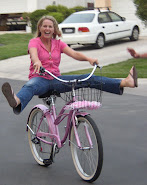






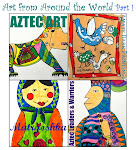
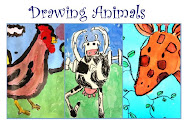
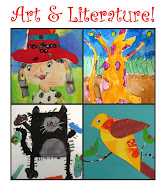

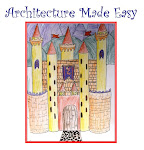
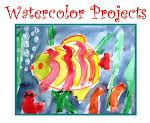





7 comments:
This is wonderful! thank you, I will use a few of these ideas for my homeschooled kindergarten student :)
Thanks for sharing! I love all your ideas and look forward to the rest of the grades ideas. :)
What a wonderful list! I'll be looking forward to the rest of these posts. :-)
Patty,
This is great! I don't teach K, but I look forward to the 1st thru 6th postings.
Thanks for all the great inspiration!
Karen E
Do you use liquid watercolors or the classic pan kind? I have been using the pan kind but am curious about the liquid style. I teach 420 students K-5, so supplies go pretty fast!
I use liquid watercolor pretty much exclusively for lower elementary although I really don't start watercolor paintings until 1st grade.
Thanks a lot for posting. You have helped me get an idea on what to do as a project for my kids this summer. We haven't tried this one as a big project though. I have seen forums discussing different forms of art. I would be able to help enhance my kids' arts skills.
Post a Comment